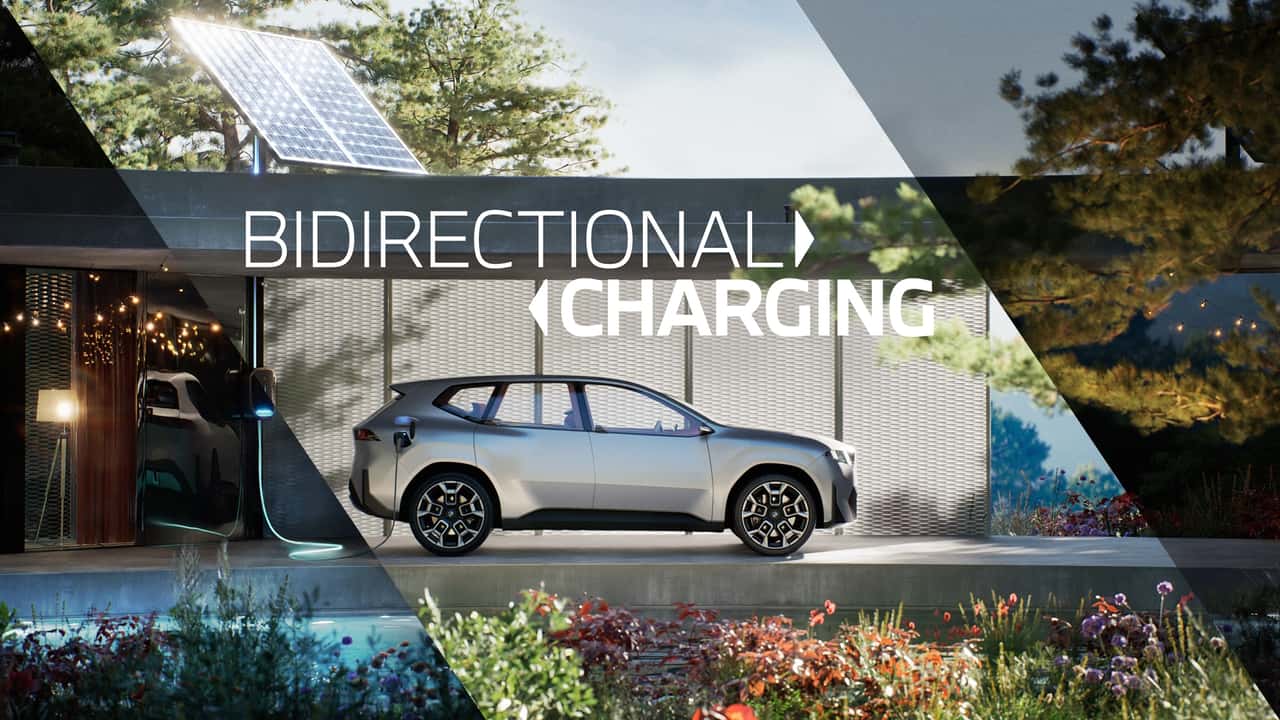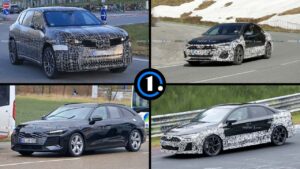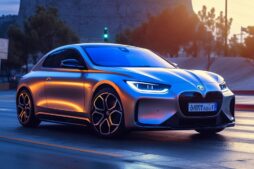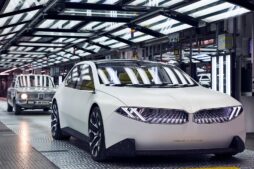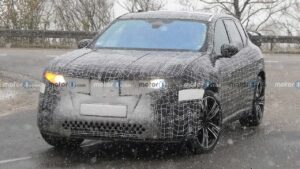BMW’s Electrifying Concept Cars: Combining Style and Practicality for the Future
BMW is making it clear that change is on the horizon. In the autumn of 2023, they revealed their latest creation, the Vision Neue Klasse concept car. This fully electric sedan gives us a glimpse of what we can anticipate from the upcoming line of BMW vehicles. Now, BMW introduces us to the Vision Neue Klasse X, the crossover model of this new electric family. Despite the company’s claims of a major shift, they are not ready to part ways with their beloved and lucrative “sports activity vehicles.”
The term “Neue Klasse” holds significant significance for devoted BMW fans. In the early 1960s, the brand introduced this name, which translates to “new class” in German, to a revolutionary series of sleek and contemporary sedans. This lineup included the iconic BMW 2002 and played a crucial role in rescuing the company from near collapse.
Present-day BMW is not facing the same existential threat as it did in the 1960s, however, the company must adapt to the constantly evolving global auto industry. While BMW has explored electric and hybrid vehicles for quite some time, the introduction of their new Neue Klasse concept lineup signals a complete overhaul in the design, functionality, and driving experience of BMW cars.
The next-generation of luxury sedans may be represented by the Vision Neue Klasse concept car, while the Vision Neue Klasse X shown here could be considered the future X3 model.
“Along with the BMW Vision Neue Klasse, the BMW Vision Neue Klasse X demonstrates the wide range of our upcoming BMW models,” stated Oliver Zipse, the Chairman of the Board of Management of BMW AG. “This emphasizes that the Neue Klasse represents more than just a vehicle or a particular concept; it is transforming the BMW brand and will embody the essence of BMW like never before.”
The upcoming crossover will need to prove its capabilities, as it sits high off the ground. BMW is implementing a fresh software plan specifically designed for electric vehicles to handle this challenge. In traditional petrol-powered cars, different components such as the engine, transmission, stability control, and adaptive suspension are each managed by separate electronic control units (ECUs). Adjusting the vehicle’s overall performance while driving requires a significant amount of communication between these individual computers.
According to BMW, their upcoming Neue Klasse platform will revolutionize the traditional use of system-specific ECUs by implementing “super-brains” instead. As stated by Frank Weber, a member of the Board of Management of BMW AG, these “high-performance computers” will work in collaboration to process tasks that were previously handled separately. Each super-brain is expected to possess a computing power that is up to 10 times greater than a standard ECU, as announced in a recent press release.
In a new technology breakthrough, a single super-computer will have complete control over driving dynamics. This includes managing torque delivery, traction control, suspension response, and adjustments to different drive modes. Additionally, another advanced computer will be responsible for all aspects of automated driving, including the sensor system, GPS navigation, steering and braking. According to BMW, this revolutionary setup will enhance processing capabilities and speed, while streamlining the vehicle’s electronic structure and reducing the necessary hardware’s dimensions and weight.
According to Weber, “The result will be more dynamic performance, more precision, more efficiency and even more fun to drive.” This statement highlights the improvements that can be expected from the upcoming changes.
BMW has announced that the upcoming Neue Klasse electric vehicles will feature a completely new sixth-generation eDrive system. These EVs will come equipped with round lithium-ion batteries that offer a 20 percent increase in energy density compared to the current prismatic cells. Additionally, BMW plans to utilize 800-volt architecture for quick charging capabilities, allowing for an impressive 186 miles of range with just 10 minutes of charging time. While no specific details have been released regarding power and performance, this technology will be featured in the Vision Neue Klasse X model.
The design of the Vision Neue Klasse X is truly eye-catching. Similar to the Vision Neue Klasse concept sedan, its body lines are elegantly minimalistic. The iconic kidney grille, which was altered on the Neue Klasse sedan, remains prominent on this model. According to BMW, this distinct feature will set apart their future electric Sport Activity Vehicles from their traditional sedans.
You may recognize the BMW crossover silhouette, but its greenhouse is surprisingly spacious. This can be attributed to clever proportions: the A- and B-pillars are slim and delicate from the outside, but gradually widen to a more traditional thickness. As expected, the Vision Neue Klasse X features the iconic Hofmeister kink, a hallmark of the Neue Klasse design. However, in this iteration, it is portrayed by a ghostly mirrored appliqué on the rear quarter windows.
The Vision Neue Klasse X adopts a fresh minimalist approach, despite its initial claim of an advanced and constantly-connected telecommunications system. Forgoing the familiar iDrive system, BMW aims for users to interact with the central display through touch or steering wheel controls.
A secondary expansive screen located at the lower part of the front window reveals essential data such as speed, battery level, and other details that are typically displayed on a driver’s gauge cluster, according to BMW. This will be further enhanced by a head-up display, adds the company. Apart from a small assortment of tactile controls on the middle console, the entire cockpit is essentially free of buttons.
Just like the Neue Klasse concept sedan from the previous year, the X boasts “Verdana” textile upholstery that is touted as being derived from plants and minerals and completely free of petroleum. The interior components, which are injection-molded, are reportedly crafted from recycled plastics from the maritime industry. The coral hue of the corduroy-style upholstery, combined with the expansive panorama roof and ample windows, create a welcoming and spacious atmosphere within the X’s interior.
When seen in real life, the Vision Neue Klasse X appears to sit somewhere between a dream-like concept vehicle and a fully-developed production model. The front and rear lights have a show-car quality to them, as acknowledged by a BMW spokesperson who also confirmed that the final version will feature more physical controls compared to what is currently showcased. However, elements such as the door handles, latches, body panels, and window openings are all indicative of a car ready for the factory line – and they must be, as BMW has committed to releasing its first Neue Klasse crossover in 2025.
Regardless of whether you consider these to be a completely novel category of automobiles or not, there is no doubt that the forthcoming era of BMW’s electric vehicles will predominantly consist of SUVs that, in my opinion, will bear a striking resemblance to the model showcased below.
